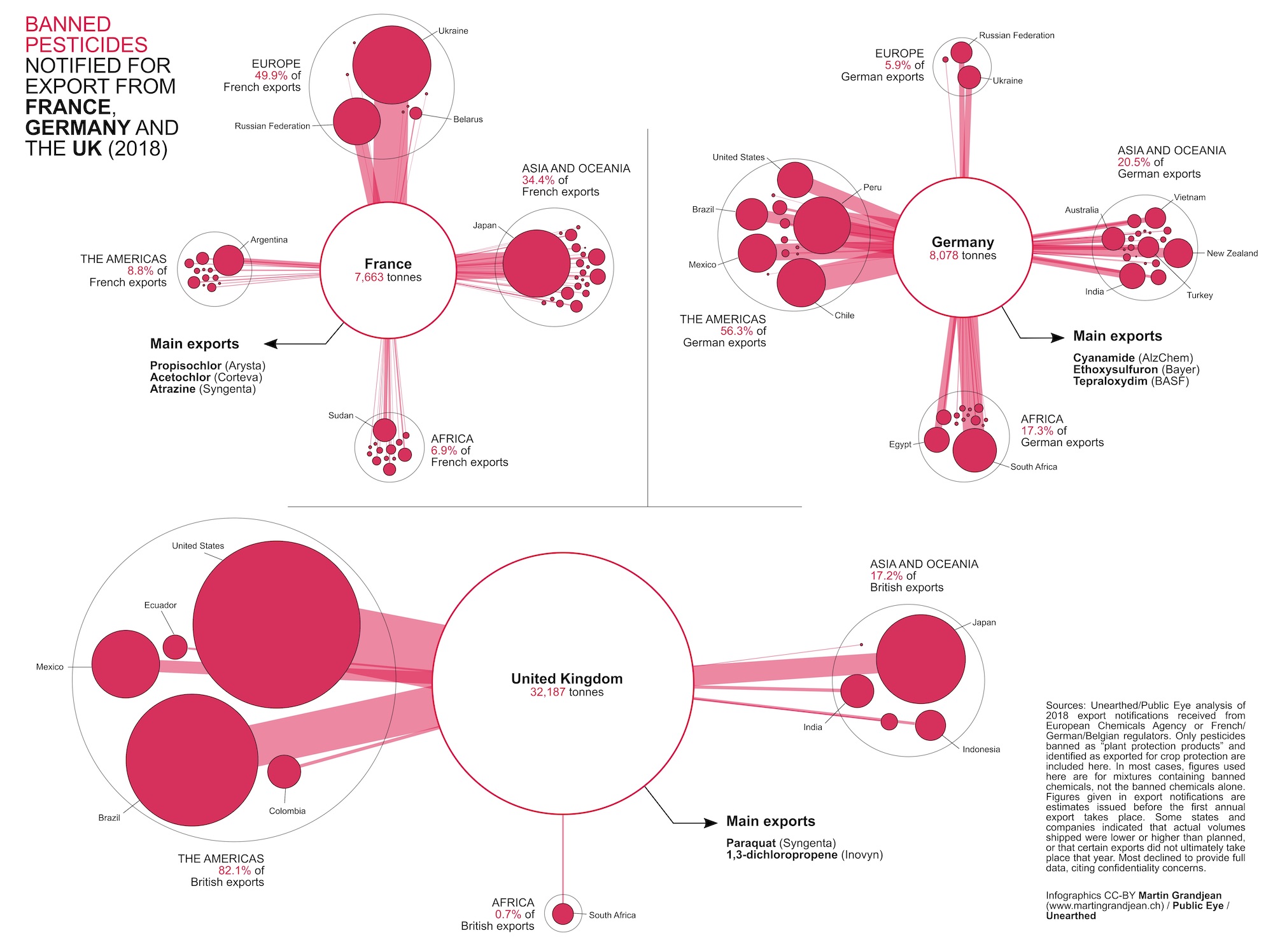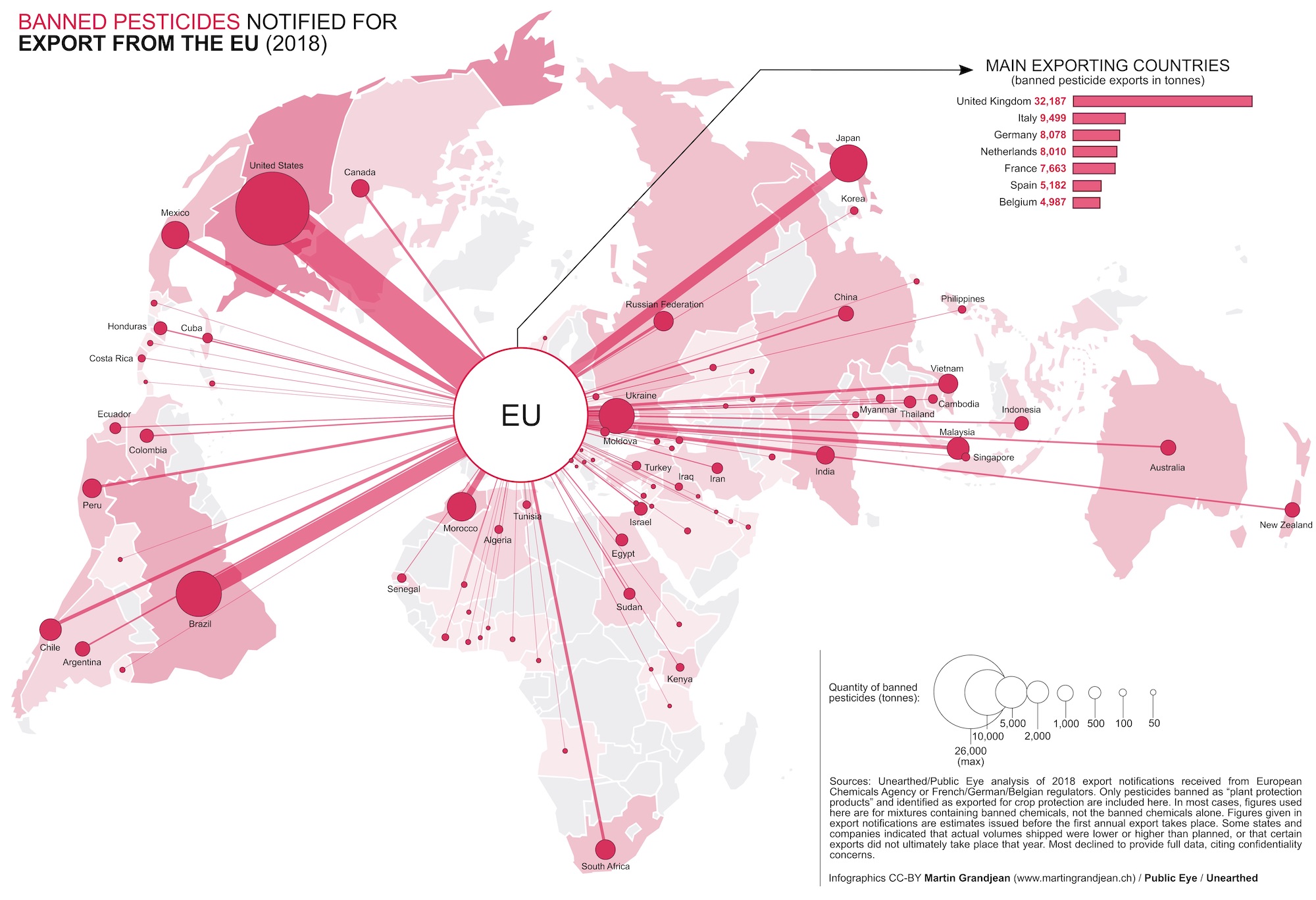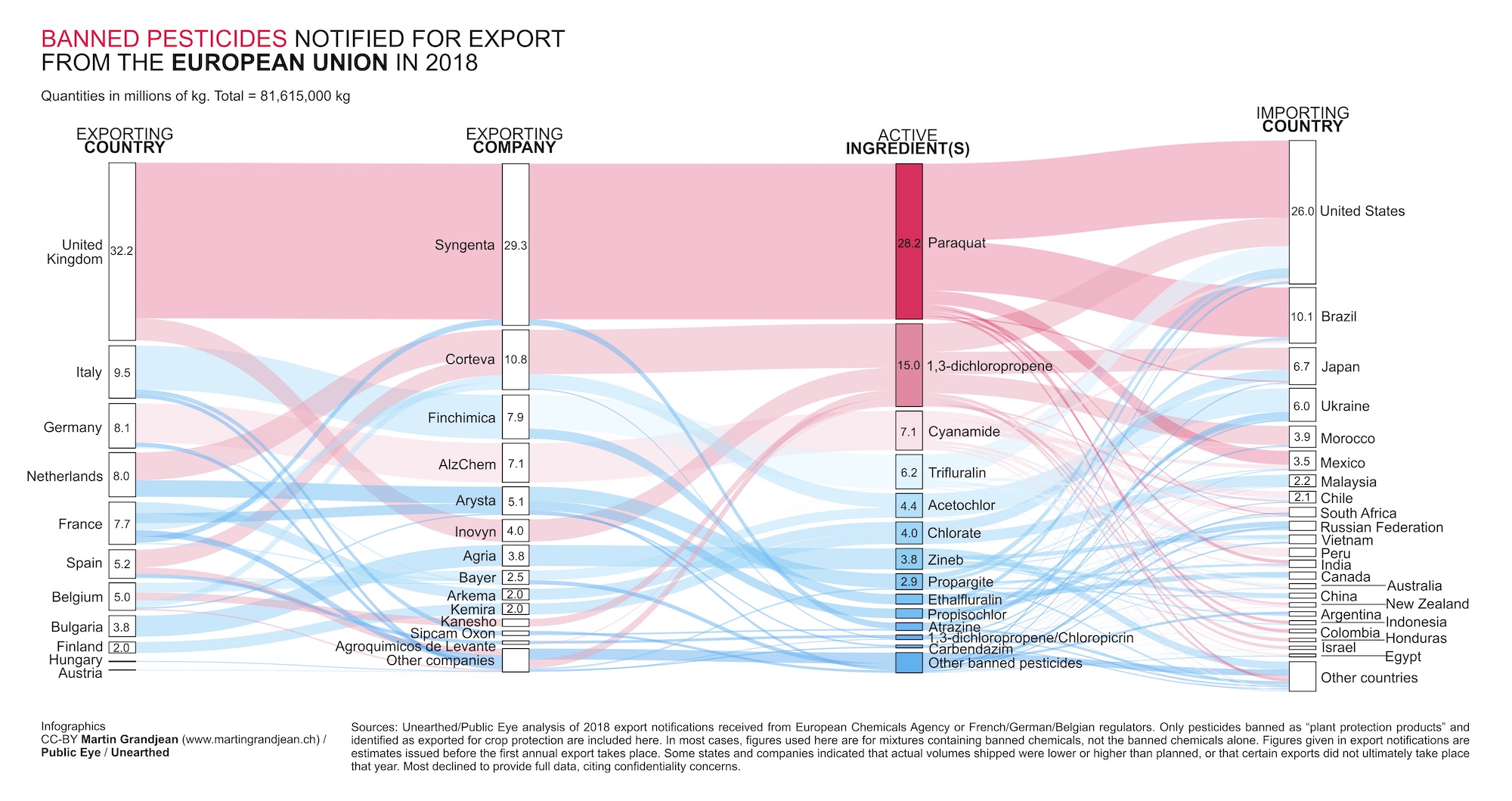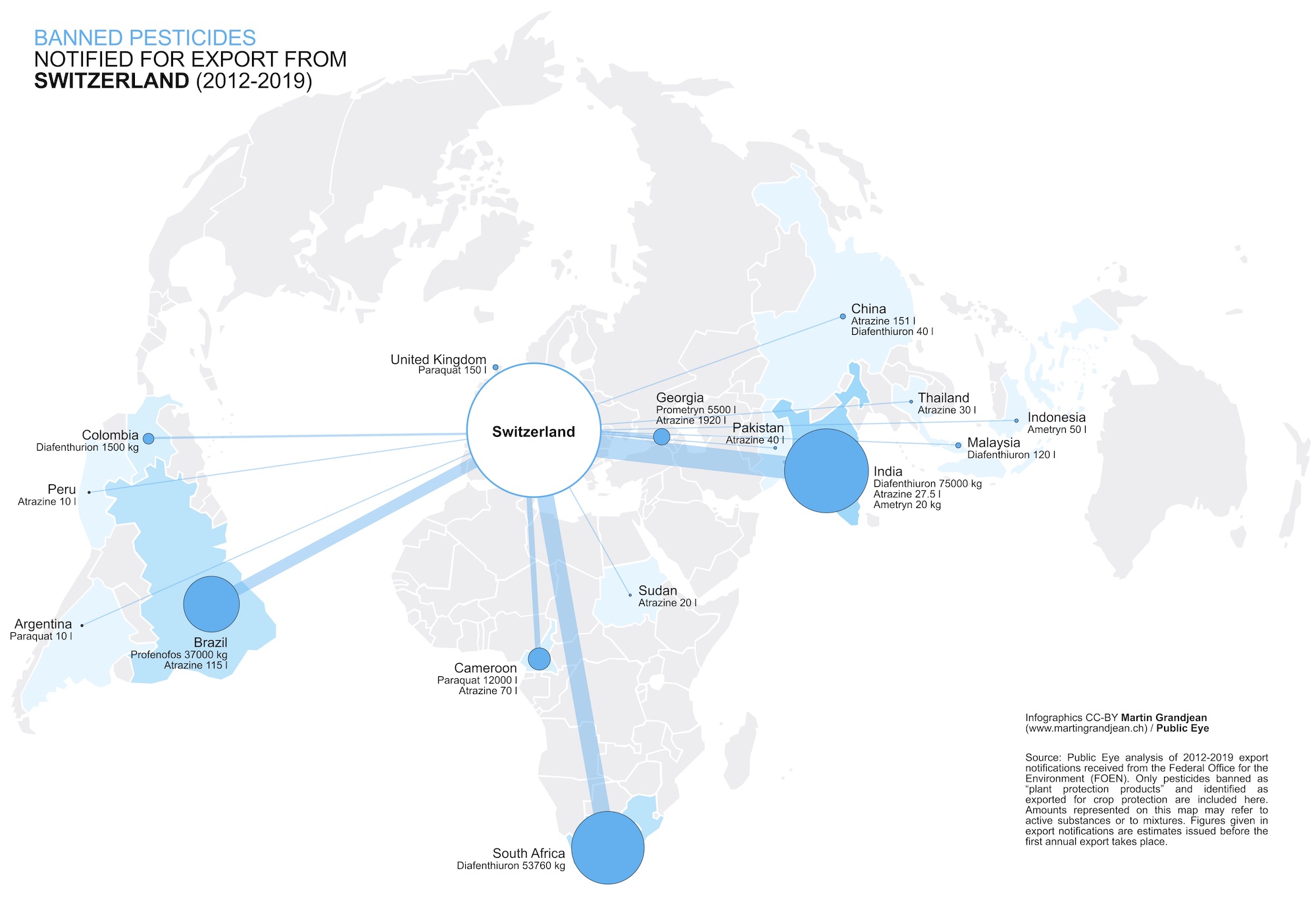About these visualizations
The investigative teams of Public Eye and Unearthed worked for months to compile the “export notifications” from the European Chemicals Agency (ECHA) and national administrations. This data is imperfect because it is only what is officially reported (actual exports may differ), but it is the most accurate overview to date. In partnership with Public Eye, I worked on the 2018 data to try to derive a visual product from their files to make this market understandable to the general public.
Paraquat is a flagship product of this “Made in Europe” scandal. This scandal sees pesticides, which are too toxic for the EU and therefore banned, being shipped to countries with weaker regulations. While this practice is legal and known, the main players have been able to hide their activities behind a veil of “commercial confidentiality”. Public Eye
Find the data and analyses of Public Eye and Unearthed investigators here:
Banned in Europe: How the EU exports pesticides too dangerous for use in Europe
PUBLIC EYE
Thousands of tonnes of banned pesticides shipped to poor countries from British and European factories
UNEARTHED
Both these articles link to the full data set. Note that the Public Eye article can also be found in French and German.
You are free to use these visualisations. Visualisations published by Public Eye are available here, but you can also simply use those published directly here (CC-BY license). These visualisations are already featured on Le Monde and RTS.
The complete picture
In the diagram above, we see that Paraquat produced by Syngenta represents more than a quarter of European exports of banned pesticides. Color doesn’t have a special meaning, it’s just useful for tracking the flow of a particular product.
Focus on 3 major exporters: France, Germany and the United Kingdom

Three portions of the global map above, focused around three countries, France, Germany and the United Kingdom.
By dividing the destination countries by continent, we see that these three exporting countries have very different “networks”. France exports mainly to Eastern Europe and Asia. Germany has a strong American market, while also exporting a lot to Asia and Africa. As for the United Kingdom, the main European exporter of banned pesticides, its market is massively oriented towards the Americas while also exporting to Asia.
Focus on pesticides imported by South Africa, Brazil and Ukraine
Each of these countries imports a different pesticide, which usually dominates their imports (other products are imported in marginal quantities). Public Eye offers specific analysis of this data:
Brazil, South Africa, Ukraine: high-risk destinations
PUBLIC EYE
Swiss exports
Swiss exports of banned pesticides (which are not included in the above EU exports and come from another source) are significantly smaller. More information on this in this Public Eye article (French and German):
Pesticides interdits : l’hypocrisie de la Suisse
PUBLIC EYE





Pourquoi avoir mis la France dans votre “Focus on 3 major exporters: France, Germany and the United Kingdom”, en non pas l’Italie… ?
Alors que dans votre “Map of European exports of banned pesticides.” la France se classe 5e et l’Italie 2e (derrière le RU et devant l’Allemagne) de ces mauvaises pratiques.
N.-B. : Un classement prenant en compte un rapport “exportation / nbre d’habitants” pourrait aussi présenter un intérêt.
Parce qu’il s’agit de visualisations qui accompagnent plusieurs enquêtes journalistiques qui se focalisent sur certaines sources de données et/ou certaines situations nationales. La comparaison Royaume-Uni/France/Allemagne est par exemple intéressante parce que ce sont trois études de cas avec des produits différents et des destinations différentes.
Le rapport production/habitants est intéressant pour faire un classement très général de ce marché, mais chaque produit est très différent (donc pas dangereux dans les mêmes proportions ou situations) donc le résultat n’aurait pas beaucoup de sens.